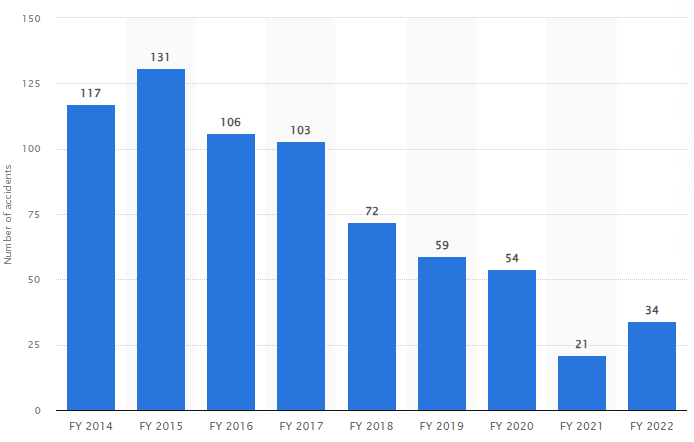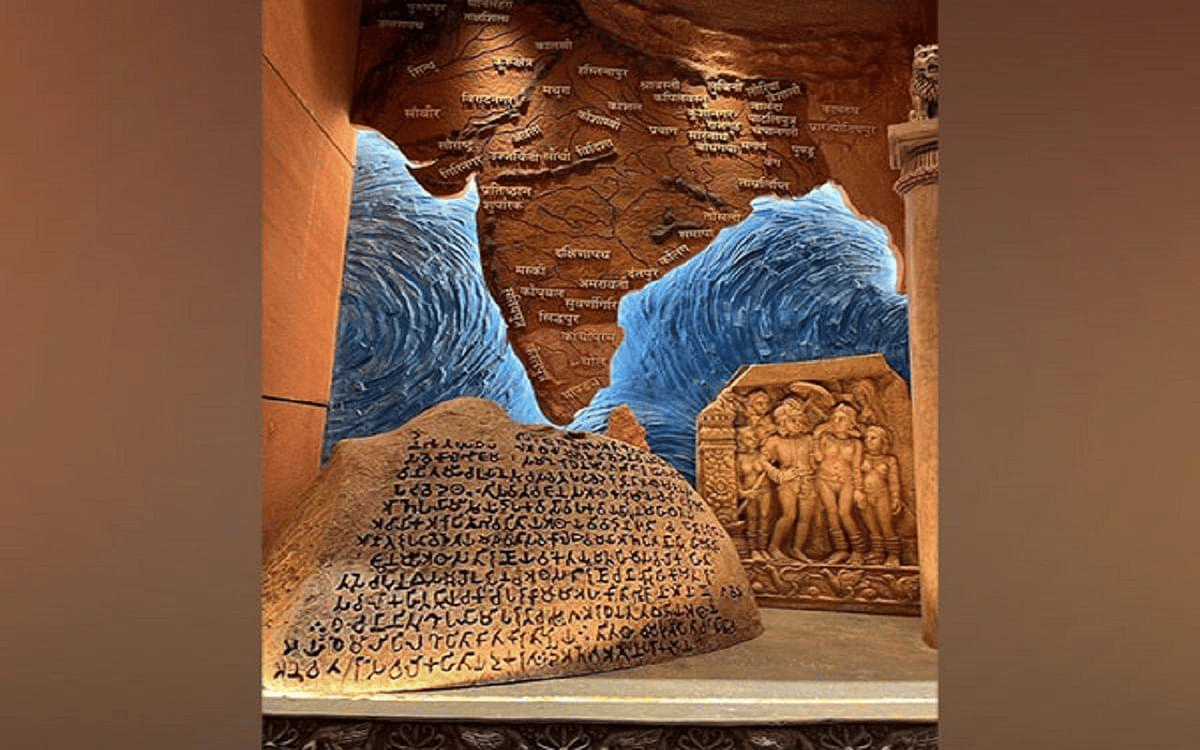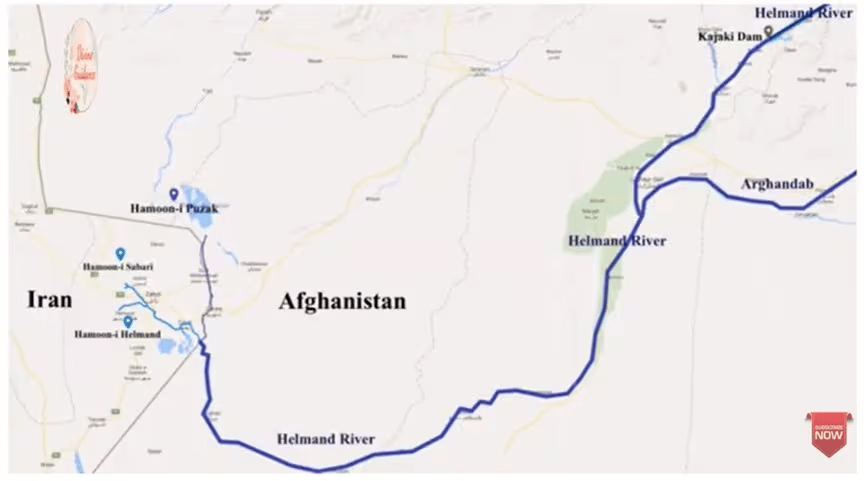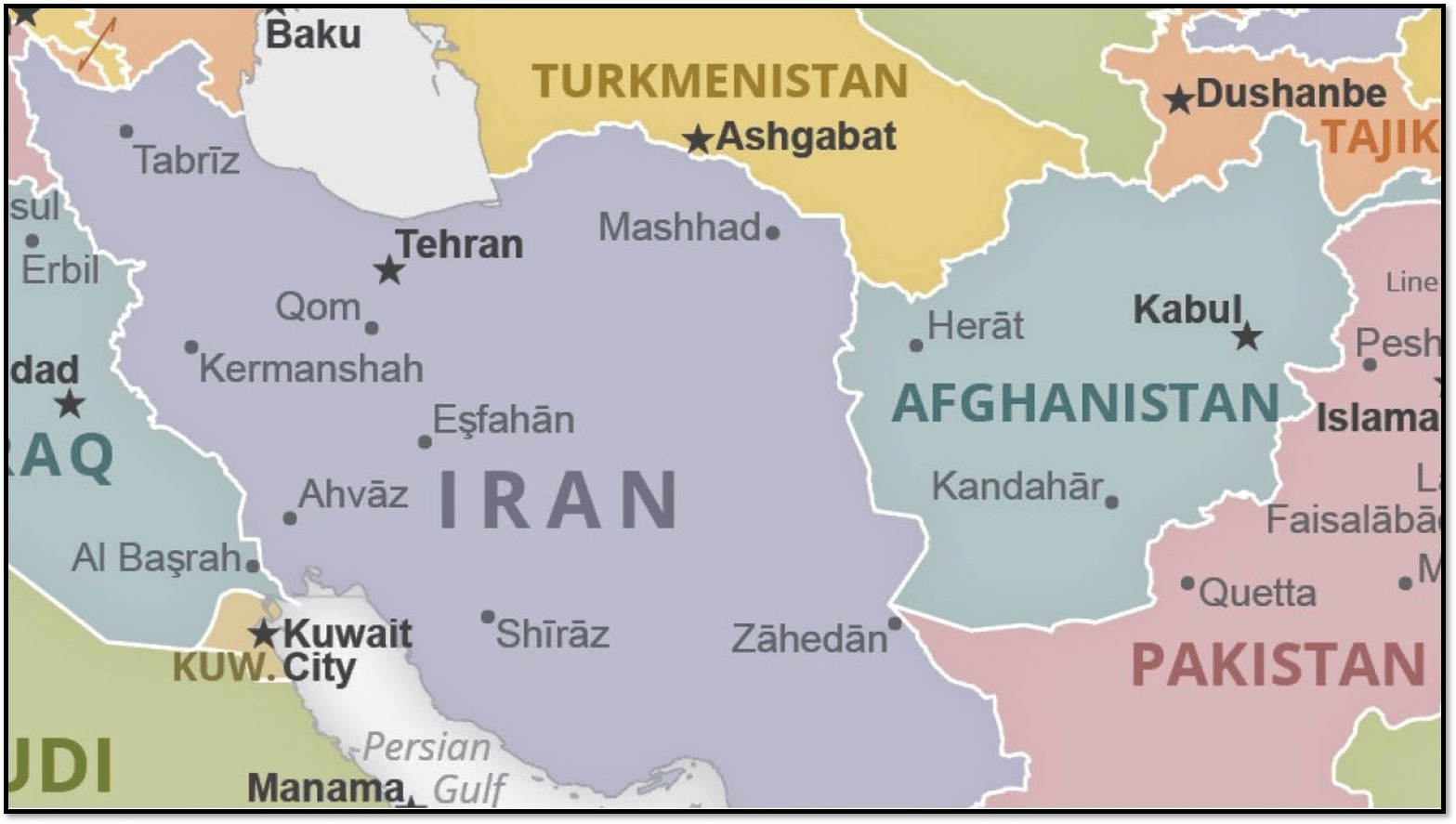
Oil Reserves in Salt Caverns: The Potential in India
Syllabus: GS 1/GS 3/Natural Resources /Economy
In Context
- Government-owned engineering consultancy firm Engineers India (EIL) is studying the prospects and feasibility of developing salt cavern-based strategic oil reserves in Rajasthan, in line with the government’s objective of increasing the country’s strategic oil storage capacity.
What are salt caverns?
- Salt caverns are artificial cavities in underground salt formations, which are created by the controlled dissolution of rock salt by injection of water during the solution mining process.
How is it different from rock caverns?
- Unlike underground rock caverns, which are developed through excavation, salt caverns are developed by the process of solution mining, which involves pumping water into geological formations with large salt deposits to dissolve the salt.
- After the brine (water with dissolved salt) is pumped out of the formation, the space can be used to store crude oil.
- Also, unlike rock caverns, salt cavern-based storage can be created and operated almost entirely from the surface.
Benefits Salt Cavern
- The process is simpler, faster, and less cost-intensive than developing excavated rock caverns.
- Salt cavern-based oil storage facilities are also naturally well-sealed, and engineered for rapid injection and extraction of oil.
- This makes them a more attractive option than storing oil in other geological formations.
- The salt that lines the inside of these caverns has extremely low oil absorbency, which creates a natural impermeable barrier against liquid and gaseous hydrocarbons, making the caverns apt for storage.
- Salt caverns are also used to store liquid fuels and natural gas in various parts of the world.
- They are also considered suitable for storing compressed air and hydrogen.
Indian Scenario
- Countries build strategic crude oil reserves to mitigate major supply disruptions in the global supply chain.
- India, the world’s third-largest consumer of crude, depends on imports for more than 85% of its requirement — and strategic petroleum reserves (SPR) could help ensure energy security and availability during global supply shocks and other emergencies.
- India currently has an SPR capacity of 5.33 million tonnes, or around 39 million barrels of crude, that can meet around 9.5 days of demand.
- The country is in the process of expanding its SPR capacity by a cumulative 6.5 million tonnes at two locations — Chandikhol in Odisha (4 million tonnes) and Padur (2.5 million tonnes).
- India’s strategic oil reserves come under the Petroleum Ministry’s special purpose vehicle Indian Strategic Petroleum Reserve (ISPRL).
- EIL was instrumental in setting up the country’s existing SPR as the project management consultant.
- The International Energy Agency (IEA) in which India is an ‘Association’ country, recommends that all countries should hold an emergency oil stockpile sufficient to provide 90 days of import protection.
- In India, apart from the SPR that are sufficient to meet 9.5 days of oil requirement, the oil marketing companies (OMCs) have storage facilities for crude oil and petroleum products for 64.5 days — which means there is sufficient storage to meet around 74 days of the country’s petroleum demand.
Potential and Related Developments
- Rajasthan, which has the bulk of requisite salt formations in India, is seen as the most conducive for developing salt cavern-based strategic storage facilities.
- India’s strategic oil reserves are part of the effort to build sufficient emergency stockpiles on the lines of the reserves that the US and its Western allies set up after the first oil crisis of the 1970s.
- The three existing rock cavern-based facilities were built during the first phase of the programme.
- India has also decided to commercialise its strategic petroleum reserves, as part of which the Abu Dhabi National Oil Company (ADNOC) stored about 0.8 million tonnes of crude oil in the Mangaluru strategic reserve.
- Taking advantage of low crude oil prices in April-May 2020, the government completely filled these reserves, leading to estimated savings of around Rs 5,000 crore.
- In 2021, India released 5 million barrels from its strategic reserves as part of a coordinated US-led action by major oil consuming countries against the joint decision of major oil producing nations to curb output.
Challenges
- No Indian company, including EIL, had the requisite technical know-how to build salt cavern-based strategic hydrocarbon storage.
- This gap in access to technology has been bridged by EIL’s recent partnership with Germany’s DEEP.KBB GmbH — a company that specialises in cavern storage and solution mining technology — Shukla said.
- However, it is still too early to identify a specific site or make an estimate of the project cost.
Future Prospects
- Salt cavern-based storage, which is considered cheaper and less labour- and cost-intensive than rock caverns, could add a new, much-needed chapter to India’s SPR story.
- If the idea comes to fruition, India could get its first salt cavern-based oil storage facility.
- The country’s three existing strategic oil storage facilities — at Mangaluru and Padur in Karnataka, and Visakhapatnam in Andhra Pradesh — are made up of excavated rock caverns.
|
Do you Know?
|
Source: IE
University Grants Commission (Institutions Deemed to be Universities) Regulations, 2023
Syllabus: GS 2/Education
In News
- Recently, the Union Education Minister released the UGC (Institutions Deemed to be Universities) Regulations, 2023, which will replace the 2019 guidelines.
Background
- The UGC Act 1956 provides for the Central Government to declare any institution other than a University to the status of Institution Deemed to be University as if it were a university within the meaning of Section 2(f).
- Upon declaration, such institution shall be deemed to be a university.
- The procedure for the declaration of status (General) & De Novo, the establishment of an off-campus centre, minimum eligibility to acquire the status, its governance, etc. are regulated by UGC Regulations.
- The first set of Regulations was notified in the year 2010 and was revised in 2016 and 2019.
- With the announcement of the National Education Policy 2020 and in order to make the Regulations simple the UGC constituted an expert committee to review and revise the Regulations.
Salient features of the regulations:
- The new rules are built on the principle of a “light but tight” regulatory framework envisioned in the National Education Policy 2020.
- It is released for existing higher education institutions to get the deemed-to-be status by simplifying the eligibility criteria in order to establish more quality-focused deemed universities.
- Under the 2019 guidelines, higher education institutions having “existence for not less than 20 years” were eligible for applying for the status.
- However, the revised guidelines have now replaced it with multi-disciplinarity, NAAC grading, NIRF ranking and NBA grading.
- Besides, a cluster of institutions managed by more than one sponsoring body or a society can also apply for deemed to be university status.
- The new regulations also introduce the “Distinct Institution” category, where an existing institution
- or an institution starting from the beginning with the focus on teaching and research in unique disciplines and/
- or addressing the strategic needs of the country or engaged in the preservation of Indian cultural heritage
- or preservation of the environment or dedicated to skill development or dedicated to sports or languages
- or any other discipline, so determined by the Expert Committee of Commission, will be exempted from eligibility criteria.
- Among other criteria that have been changed are the faculty strength has been increased from 100 to 150, corpus fund for private institutions has been increased from Rs 10 crore to Rs 25 crore, and the creation of executive councils like central universities in these universities as well.
- The revised guidelines have also made it mandatory for deemed universities to register on Academic Bank of Credits (ABC).
- The institutions can offer twinning programmes, joint degree programmes, and dual degree programmes in accordance with the provisions stipulated in the regulations concerned.
Significance
- It will encourage universities to focus on quality and excellence, strengthen the research ecosystem and have a long-term impact in transforming our higher education landscape.
- It will facilitate the creation of much more quality-focused deemed-to-be universities in an objective and transparent manner.
Source: TH
Accidents in Indian Railways
Syllabus: GS3/ Infrastructure, Railways
In Context
- At least 250 people were killed in a horrific three-train collision in Odisha’s Balasore District. The crash involved the Bengaluru-Howrah Superfast Express, the Shalimar-Chennai Central Coromandel Express, and a Goods train.
Term Accident
- According to the Railway Accident Manual, “Any occurrence which does or may affect safety of the Railway, its engines, rolling stock, permanent way, works, passengers or servants or which affects the safety of others or which does or may cause delays to trains or loss to the Railway” is defined as an accident.
Train Accidents: Statistics
- According to the National Crime Records Bureau (NCRB) report, in 2020, more than 13,000 train accidents across the country have killed nearly 12,000 railway passengers last year.
- About 70 percent of these railway accidents took place as passengers either fell off the train or came in the way while crossing the railway track.
- Maharashtra ranks first and Uttar Pradesh ranks second, both in terms of the
- number of railway accidents as well as deaths.
- In 2019-2020, the Indian Railways (IR) recorded zero fatalities due to “consequential accidents”—incidents caused by operational lapses, such as derailments, collisions and fires.

What are the causes of Railway accidents in India?
- Ageing infrastructure: The ‘present environment on Indian Railways reveals a grim picture of inadequate performance’ largely due to poor infrastructure and resources, and lack of empowerment at the functional level.
- Failure of railway staff: Accidents caused by lapses by railway personnel. Manpower shortages are causing many loco pilots to work long hours, beyond the 12 hours per day maximum, often without leave or rest.
- Failure of equipment:
- Rolling stock: related to the Mechanical Directorate (for instance, locomotives, coaches/wagons and wheels)
- Track: generally associated with lapses of the Engineering Directorate (for example, rail fractures)
- Electrical: usually involving the Electrical Directorate (for instance, failure of overhead equipment, electrical multiple units, or EMUs, and e-locomotives)
- Signaling and telecommunications
- Traffic and Commercial: All accidents related to lapses, such as defective loading and unloading, and train operations with improper route setting and securing.
- Incidental: Accidents on account of natural or human-made factors, such as landslides, floods, earthquake or sabotage.
Accident type in Indian Railways
- The accident type occurred in Indian Railways over the years following the trend Derailment > Level crossing accidents > Collisions > Fire in trains > Miscellaneous accidents.
Factors Contributing to Vulnerability
- Safety in railways in most developing countries is influenced by the following constraints:
- High level of dependency on the human element.
- Over burdened staff, non-ideal working conditions for staff.
- Indiscipline and lack of work ethics amongst the workforce.
- Lack of administrative and political will.
Impact of train accidents
- Casualties and Victims: Train accidents cause loss of life and property as well as are detrimental for the economy.
- Economic Loss: The data pertaining to the economic loss due to accidents in Indian Railways in terms of transportation & logistics, permanent way loss and compensation paid to victims.
- Environmental Issues: Many train accidents result in environmental contamination of the surrounding area. Trains that are used to carry a wide range of hazardous materials, from crude oil to chlorine and other chemicals can damage the environment.
Steps Taken
- Mission Zero Accident: In the Railway Budget 2016-17, Mission Zero Accident was one of the Missions announced, comprising of the two sub-missions:
- Elimination of unmanned level crossings (UMLC) over broad gauge in the next 3-4 years. Currently, all unmanned level crossings (UMLC) on Broad Gauge have already been eliminated in January 2019.
- Train Collision Avoidance System (TCAS): To prevent collisions and signal passing at danger by the Loco Pilot through developing an indigenous technology and also to increase throughput by increasing average sectional speed on Indian Railways (IR). The system has been installed on Lingampalli – Vikarabad – Wadi and Vikarabad – Bidar sections (250 Route km) on South Central Railway. Further, the system is under implementation on 1199 Route Km on South Central Railway.
- Rashtriya Rail Sanraksha Kosh Fund: The fund has been created in 2017-18 with a corpus of ₹1 lakh crore over a period of five years for critical safety related works. It is a non-lapsable fund.
- Refresher Course to Officers: Over 300,000 non-gazetted officers across the country have been trained through a refresher course to address lapses by railway staff through skills enhancement.
- Safety category staff is also given training in Disaster Management with emphasis on Relief, Rescue and Rehabilitation (three ‘R’s), Threat Perception and Emergency Response, Fighting and use of fire Extinguishers and First Aid.
- Fog PASS Device, a Global Positioning System (GPS) based hand held portable device, is used. It serves as an aid for the crew during foggy weather through audio visual alarm, whenever any landmark comes within the geo-fence range.
- Indian Railways has indigenously developed ‘Kavach’, an automatic train protection system to prevent accidents due to human error.
- Construction is also underway for the Western Dedicated Freight Corridor, which aims to decongest India’s railway network.
- Later this year, the country will open Chenab Bridge – the world’s tallest railway bridge – in the country’s Jammu and Kashmir region.
High Level Safety Review Committee (Railways) Recommendations
- The Ministry of Railways had appointed a High Level Safety Review Committee under the chairmanship of Dr. Anil Kakodkar to review the safety of the Indian Railways and recommend improvements. The Committee recently presented its report.
- Key Observation & recommendations:
- The financial state of Indian Railways is ‘at the brink of collapse’ unless some concrete measures are taken. This has led to a neglect of infrastructure maintenance.
- In the present situation, the three vital functions (rule making, operations and the regulation) are all vested in the Railway Board. There is need for an independent mechanism for safety regulation.
- The Research Design and Standards Organization (RDSO), the apex technical wing of the Railways, is highly constrained. This has hampered the ability of the system to internalize emerging technologies.
- The Committee recommends the adoption of an Advanced Signalling System (akin to the European Train Control System) for the entire trunk route length of 19,000 km within 5 years. This is estimated to cost Rs 20,000 crore.
Bibek Debroy Committee on Mobilization of Resources for Major Railway Projects (2015)
- Creation of a separate safety department within Indian Railways, development of a comprehensive safety plan, utilisation of technology for safety enhancements, improvement in track maintenance practices, and enhancement of safety training programs.
Way Ahead
- Need for political will: Strong political will is the need of the hour to fill up the gaps and constraints to make the railways a safer and effective transport system.
- Fulfilling Human Resource Gaps: There are urgent steps to fill vacancies and reduce the long working hours of locomotive pilots. And, ime-bound filling up of vacancies in critical safety categories.
- Avoid animal encroachment on Tracks: Need for installation of fence along the railway track to avert derailments caused by cattle run.
Source: IE
Bima Vahaks
Syllabus: GS 3/Economy
In News
- The Insurance Regulatory and Development Authority of India (IRDAI) issued draft guidelines for Bima Vahaks.
About Bima Vahaks

- It seeks to establish a dedicated distribution channel at the level of Gram Panchayats.
- The guidelines propose Corporate Bima Vahaks and Individual Bima Vahaks for the distribution channel.
- Corporate Bima Vahak would be legal persons registered in accordance with the respective laws and engaged by an insurer.
- Individual Bima Vahak could be any individual appointed by an insurer or appointed by a Corporate Bima Vahak.
- Features
- The BVs, both corporate and individual, would be authorised to undertake activities like the collection of proposal information, and KYC documents and coordinate claims-related services.
- Every Insurer shall remain responsible for ensuring KYC and AML (anti-money laundering) compliance with respect to the policies sourced through Individual Bima Vahaks and Corporate Bima Vahaks.
- The guidelines emphasize the identification and development of local resources within each Gram Panchayat, with a special focus on encouraging the onboarding of women as Bima Vahaks to gain the trust of the locals.
- The guidelines also empower the Chairperson of the Authority to issue clarifications to resolve any difficulties in the application or interpretation of these guidelines.
- Importance and Objectives: To establish a dedicated distribution channel focused on enhancing insurance inclusion and creating awareness in every Gram Panchayat (village council).
- To improve accessibility and availability of insurance in every nook and corner of the country.
- The Bima Vahak initiative holds immense promise for the future and will be a powerful force to enhance insurance inclusion and awareness.
Source: TH
Akhand Bharat
Syllabus: GS1/ History, GS2/ International
News
- Controversy has erupted in Nepal over the mural of the Indian subcontinent landmass in the newly inaugurated Parliament building.
Controversy
- Parliamentary Affairs Minister Pralhad Joshi has described the mural as a map of “akhand Bharat”
- The mural shows Lumbini, the birthplace of Gautama Buddha, indicating India’s claims over the region. Nepal considers Lumbini as one of the major cultural centres on the Nepalese map.
 Clarification by Government
Clarification by Government
- The Ministry of External Affairs clarified that “The mural in question depicts the spread of the Ashokan empire and the idea of responsible and people-oriented governance that he (Ashoka) adopted and propagated.”
- The official description of the mural says: “Between 265 and 238 BC, Ashoka spread the message of Buddhism and got it inscribed at many places”.
- The artwork occupies one of the 16 niches in the Constitutional Foyer of the new Parliament building. Murals in the other niches are dedicated to Indian sages, ancient texts, and the Ramayana; one of them is dedicated to Sardar Vallabhbhai Patel and Jawaharlal Nehru.
History of the idea of Akhand Bharat
- Akhand Bharat, is a term for the concept of a unified Greater India.
- It asserts that modern-day Afghanistan, Bangladesh, Bhutan, India, Maldives, Myanmar, Nepal, Pakistan, and Sri Lanka are one nation.
- During the Indian independence movement, K.M. Munshi (of Indian National Congress) and Veer Savarkar (of Hindu Mahasabha) propounded the notion of an Akhand Bharat.
- Occasionally, the call for creation of the Akhand Bharat has been raised by Hindu Mahasabha, RSS, Vishva Hindu Parishad, Shiv Sena etc.
Source: IE
Iran-Taliban Water Conflict
Syllabus: GS2/ Foreign Affairs, IR
In News
- Iran and Afghanistan are locked in a long-standing dispute over the sharing of water from the Helmand River.
- The Helmand River is a vital source of water for both sides, supporting agriculture, livelihoods and ecosystems in the region.
What is the Dispute?
- Afghanistan and Iran signed an agreement — the Helmand River Treaty — in 1973 to regulate the allocation of river water. But the accord was neither ratified nor fully implemented, causing disagreements and tensions to persist.
- Iran has accused Afghanistan of violating its water rights for years, arguing that far less water than the amount agreed to in the 1973 treaty flows into Iran.
- Last year, Iran received only 4% of its share of the river water, Afghanistan has rejected Iran’s accusations, underlining that climatic factors like a shortage of rainfall, resulting in reduced river water volumes, are to blame for the situation.
- A major source of concern for Iran is Afghanistan’s construction of dams, reservoirs and irrigation systems along the Helmand River.
Helmand River
- The Helmand is Afghanistan’s longest river. It originates near Kabul in the western Hindu Kush mountain range and flows in a southwesterly direction through desert areas for a total of about 1,150 kilometers before emptying into Lake Hamun, which straddles the Afghanistan-Iran border.
- Lake Hamun is the largest freshwater lake in Iran.It used to be one of the world’s largest wetlands fed by Helmand.
- It is separated from the watershed of the Kabul River by the Unai Pass.

Iran -Taliban Ties
- Iran and Afghanistan share a 950-kilometer land border. Both countries have no major territorial disputes.
- Iran had cultivated good ties with the Taliban before the Islamic fundamentalist group captured Kabul in August 2021 as US and NATO troops were in the final weeks of their pullout from Afghanistan.

Source: IE